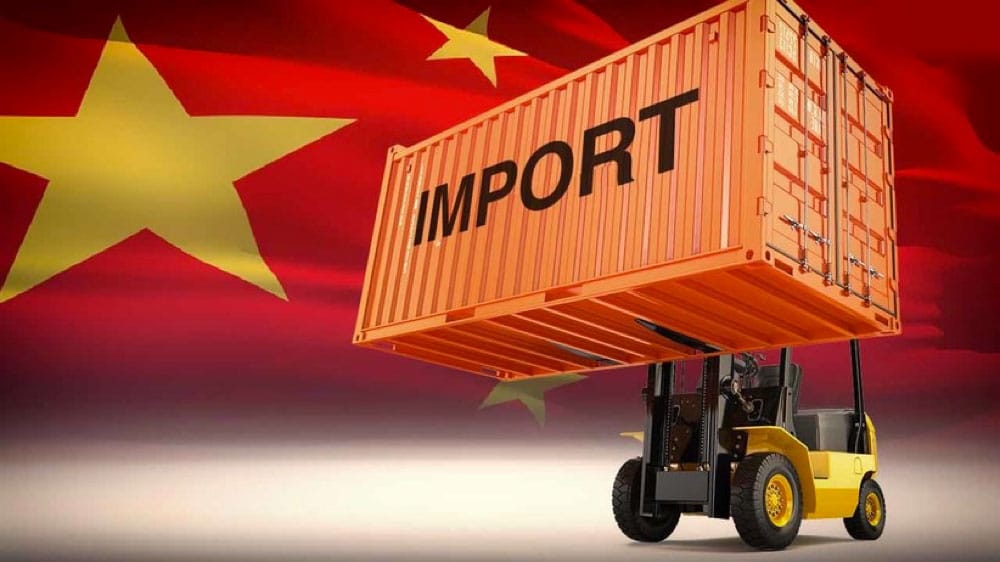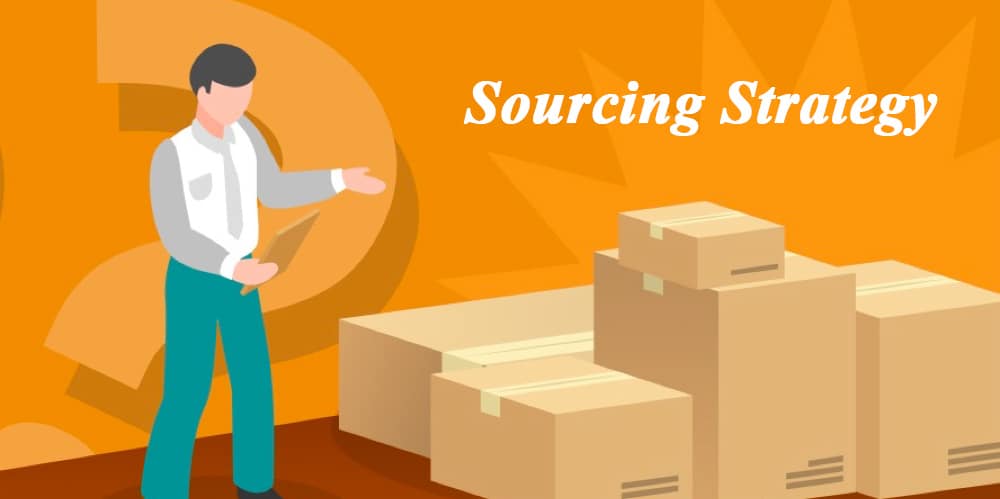
When buying from China, you’ll encounter the terms “procurement” and “purchasing.” While these words may sound similar, they represent different concepts. Procurement is focused on planning; it involves finding reliable suppliers, building strong relationships, and strategizing for the future. On the other hand, purchasing is action-oriented; it refers to placing orders, processing payments, and ensuring items are delivered.
Understanding the distinction between procurement vs purchasing is crucial. This knowledge can help you avoid costly mistakes and make informed decisions. For instance, over 70% of companies today prioritize sustainability in procurement. However, many still struggle to identify trustworthy suppliers. By enhancing your procurement skills, you can stay aligned with these trends, save time, and effectively monitor supplier performance.
Whether you’re a newcomer or a seasoned professional, striking a balance between these roles can significantly enhance your sourcing experience in China.
Key Takeaways
Learn the difference between procurement and purchasing. Procurement is about planning and building supplier relationships. Purchasing focuses on quick tasks like buying and paying.
Improve your procurement skills to find good suppliers. This saves time and helps you follow market trends, like being eco-friendly.
Hire a sourcing agent like Yansourcing to make procurement easier. They can find good suppliers, get better prices, and check product quality.
Reduce risks by using different suppliers and watching market changes. This helps prevent problems and keeps your business safe.
Mix procurement and purchasing for better results. Planning ahead and handling daily tasks together avoids mistakes and keeps sourcing smooth.
Procurement vs Purchasing: Definitions and Key Differences
What Is Procurement in China Sourcing
Procurement is about planning smartly. When buying from China, procurement means making good decisions. You find dependable suppliers, agree on fair terms, and aim for long-term success. It’s more than just buying things; it’s about creating a supply chain that fits your business needs.
China is a major place for making goods, like electronics and clothes. To do well in procurement, you must learn about the local market and how supply chains work. Clear communication is very important. Hiring agents or translators who speak the language can help avoid mistakes and build trust with suppliers.
Checking quality is also very important. You need clear product details and regular checks to meet standards. Negotiating prices is another key part. Knowing costs and building good relationships can help you get better deals.
Tip: Think of procurement as the base of your sourcing plan. It helps you succeed by matching your goals with the right suppliers.
What Is Purchasing in China Sourcing
Purchasing is simpler. It’s the part where you buy and pay for products. Procurement is about planning, but purchasing is about getting things done.
In China sourcing, purchasing often means working with helpers or agents. These people assist with finding suppliers, talking about prices, and managing orders. They make sure everything goes smoothly, from placing orders to making payments.
How you pay is a big part of purchasing. There are different ways to pay, like telegraphic transfers, letters of credit, or escrow services. Each has good and bad points. For example:
Payment Method | Risks | Pros | Cons |
|---|---|---|---|
Telegraphic Transfer | No payment protection | Quick and keeps records | Fees and exchange costs |
Letter of Credit | Less flexible | Very safe, lowers risks | Slow and costly |
Escrow Services | Rely on service provider | Clear and solves disputes | Extra costs |
Note: Pick a payment method based on your deal size and risk. For safer deals, escrow services or letters of credit are better choices.
Key Differences Between Procurement and Purchasing
Procurement and purchasing might seem alike, but they are not the same. Procurement is about planning for the future, like managing costs and risks. Purchasing is about short-term tasks, like placing orders and paying for goods.
Here’s a simple comparison:
Aspect | Procurement | Purchasing |
|---|---|---|
Focus | Long-term planning | Short-term buying |
Activities | Picking suppliers, negotiating | Ordering, paying |
Goal | Building strong connections | Getting items on time |
Procurement prepares the way for purchasing. Without good procurement, purchasing can become slow and expensive.
Tip: Use both roles wisely to work better. Procurement helps you choose the best suppliers, while purchasing keeps your business running smoothly.
Strategic Role of Procurement in China Sourcing

Procurement is key to smooth business operations when sourcing from China. It’s not only about buying items but making smart choices for long-term success. This section explains how procurement helps you pick suppliers, manage costs, and build strong partnerships. Let’s explore.
Picking and Managing Suppliers with Yansourcing
Choosing the right supplier is crucial for good procurement. But how can you be sure you’re selecting the best one? Yansourcing makes this easier. They follow clear steps to help you choose and manage suppliers. Here’s what they do:
Call suppliers to check if they meet basic standards.
Handle NDAs to protect your business.
Create templates and scorecards to evaluate suppliers.
Review supplier replies and check product samples for quality.
Plan and perform audits to confirm supplier reliability.
Test samples to ensure they meet your expectations.
Negotiate contracts that fit your goals.
This method ensures you don’t just pick a supplier but build a strong supply chain. With Yansourcing, every step is done carefully and correctly.
Tip: Take your time choosing suppliers. A good supplier saves you time, money, and stress later.
Managing Costs and Negotiating
Procurement isn’t only about finding suppliers; it’s also about saving money. Smart sourcing helps you cut costs without losing quality. Yansourcing is great at this. They use data to get better deals for you.
For example, they study market trends and production costs to know fair prices. They also use their connections with manufacturers to get discounts and better terms. This means you get good products at fair prices.
Here’s how Yansourcing manages costs:
Step | What It Means |
|---|---|
Market Research | Learning about price trends |
Cost Analysis | Breaking down production costs |
Negotiation | Getting better deals |
Contract Management | Saving money over time |
By focusing on these steps, you can save money and keep quality high. This is what smart sourcing is all about.
Note: Always aim for deals that benefit both sides. Trust with suppliers leads to better deals later.
Building Strong Supplier Partnerships
A good supplier relationship is more than just business. It’s a partnership that helps your business grow. Procurement focuses on building these partnerships for stability and success.
Yansourcing helps by promoting clear communication and trust. They suggest regular updates and feedback to keep you and your supplier aligned. This reduces problems and builds stronger trust.
Why is this important? A strong supplier relationship can lead to:
Faster solutions to problems.
Priority service during busy times.
Special deals or early access to new products.
Think of your supplier as part of your team. Investing in this relationship helps your business grow.
Callout: A strong supplier relationship isn’t just helpful—it’s a smart strategy.
Risk Management in Sourcing Building Materials
Getting building materials from China can help your business grow. But it comes with risks. Problems like tariffs or bad quality can cause delays. These issues might hurt your profits. That’s why knowing how to handle risks is so important. This section will show you how to spot and fix these problems. It will help keep your procurement process smooth and steady.
Common Risks in Sourcing Building Materials
When buying building materials, risks can happen anytime. Here are some common ones:
Risk Type | Description |
|---|---|
Tariffs and trade | New tariffs raise costs and create uncertainty. |
Cost | Hidden fees make offshore suppliers less cost-effective. |
Currency | Currency changes affect prices; planning helps manage this. |
Quality and reputation | Bad quality harms your brand; good sourcing reduces this risk. |
Labor | Lack of skilled workers means finding new talent sources. |
Global disruption risks | Disasters or political issues can break supply chains; planning helps avoid problems. |
These risks can hurt your business. But with smart strategies, you can lower their impact and stay on track.
How to Manage Risks Effectively
Being ready is the first step to managing risks. Here are some ways to protect your business:
Choose Reliable Suppliers
Trustworthy suppliers help reduce risks. Companies like Yansourcing check suppliers carefully. They inspect factories and verify certifications to ensure reliability.Diversify Your Supply Chain
Don’t depend on just one supplier or location. Spread your orders across different suppliers and areas to avoid disruptions.Monitor Market Trends
Keep an eye on tariffs, currency changes, and market updates. This helps you adjust quickly and avoid surprise costs.Focus on Quality Control
Low-quality materials can hurt your business. Use strict checks at every step. Yansourcing offers inspections to ensure materials meet standards.Plan for Disruptions
Problems like natural disasters or shipping delays can happen anytime. Have backup plans, extra stock, or alternative suppliers ready.
Tip: Managing risks isn’t just about avoiding trouble. It’s about being ready to act fast and keep your business running.
Why Risk Management Matters
Good risk management saves money and protects your brand. It ensures a steady flow of quality materials, even during tough times. This builds trust with customers and makes you stand out from competitors.
By adding risk management to your procurement plan, you’re not just solving problems. You’re building a strong supply chain for long-term success.
Callout: Don’t wait for risks to cause trouble. Start managing them now to secure your business’s future.
Transactional Role of Purchasing in China Sourcing

Purchasing helps keep your sourcing process smooth and efficient. It focuses on actions like ordering, paying, and checking product quality. Let’s explore the main steps in purchasing and how to manage them well.
Placing Orders and Getting Products
The first step in purchasing is placing an order. This might seem easy, but it needs careful attention. You must clearly share details like product type, amount, and delivery time with your supplier. Mistakes here can cause delays or wrong shipments.
Using a sourcing agent like Yansourcing can make this easier. They check supplier abilities, confirm order details, and track progress. This ensures your orders arrive on time and meet your needs.
Tip: Always review your purchase orders carefully. Small errors can lead to big problems later.
Payment Terms and Handling Money
Paying suppliers is another important part of purchasing. You need clear payment terms to avoid confusion. Talking openly with your supplier helps you agree on when and how to pay.
Here’s how to manage payments well:
Keep detailed records of all payments and agreements.
Use these records to track timelines and clarify terms.
If issues arise, organized records help solve them quickly.
Follow these steps to simplify payments:
Talk openly about payment plans with your supplier.
Decide how much to pay upfront.
Set rules for paying the rest later.
Note: Good records make payments clear and help with audits.
Checking Product Quality with Yansourcing
Making sure products are high-quality is key in purchasing. Bad products can hurt your business. Yansourcing helps by inspecting and auditing items to meet your standards.
Here are some ways to check quality:
Evidence Source | Description |
|---|---|
Quality Control in China | Checks products through audits and tests. |
Supplier Quality Assurance | Ensures suppliers keep producing good items. |
Quality Assurance in Sourcing | Inspects products before production or shipping. |
Strategic Sourcing Quality Assurance | Sets clear rules and evaluates suppliers carefully. |
With Yansourcing, you can set clear quality rules, review suppliers, and ensure your products follow regulations.
Callout: Quality checks protect your brand and keep customers happy.
Managing Logistics and Delivery for Building Materials
Handling logistics and delivery is very important when buying building materials from China. Without a good plan, delays and extra costs can cause problems. This section explains how to make logistics easier and ensure smooth delivery, saving both time and money.
When buying building materials, you’ll choose between different shipping options. Each option has good and bad points, so pick what works best for you. For example, sea freight is cheaper for big orders, but it’s slower. Air freight is faster but costs more. Rail freight is a middle option, balancing cost and speed, but it has fewer routes.
Here’s a simple comparison:
Shipping Method | What It Means | Good Points | Bad Points |
|---|---|---|---|
Sea Freight | Best for big orders | Costs less | Takes longer |
Air Freight | Fast delivery | Very quick | Costs more |
Rail Freight | Middle option | Fair cost and speed | Fewer routes |
Use this table to pick the shipping method that fits your needs.
Working with trusted vendors is also very important. Vendors help make sure your materials arrive on time and in good shape. Yansourcing connects you with reliable vendors who know your needs. They also handle talks and track shipments, so you don’t have to worry about delays.
To avoid issues, always check delivery dates and shipping papers carefully. Clear talks with vendors help everyone stay organized. If problems happen, a sourcing agent like Yansourcing can help fix them quickly.
Tip: Always plan ahead and have backup ideas ready. This keeps you prepared for any delays or problems.
Practical Applications of Procurement and Purchasing in China Sourcing

Balancing Procurement and Purchasing for Business Efficiency
Balancing procurement and purchasing is like teamwork in sports. When done well, it keeps your business running smoothly. Procurement focuses on long-term goals, like finding good suppliers and making deals. Purchasing handles daily tasks, like ordering items and getting them delivered.
Why is this balance important? It stops problems like running out of stock or having too much. Combining procurement with supply chain planning helps avoid these issues. A flexible procurement team also prepares for market changes. A Gartner study shows only 21% of companies have strong networks. This proves the need for better planning and quick action in sourcing.
By linking procurement and purchasing, you create a smooth process. This saves time and cuts costs. It’s a smart way to keep your business steady and ready for changes.
Tip: Think of procurement as planning and purchasing as doing. Together, they work best.
Leveraging Yansourcing’s Expertise in Building Materials
When buying building materials from China, you need a skilled partner. Yansourcing is great at both procurement and purchasing, making them very helpful. They find trusted suppliers, make good deals, and check product quality.
For example, Yansourcing ensures you work with reliable makers. They check factories, confirm certifications, and test samples. This lowers risks and builds trust in your supply chain.
Yansourcing also makes purchasing easier. They place orders, track shipments, and handle delivery. Whether it’s furniture, lights, or marble, they make sure your items arrive on time and meet your needs.
Callout: Yansourcing’s skills in procurement and purchasing make sourcing simple and stress-free.
Case Study: Successful Procurement and Purchasing Strategy
Here’s an example. LRG International worked with Yansourcing to make Bluetooth speakers for the UK and Germany. The project needed smart procurement, like making deals and managing suppliers. Yansourcing also handled purchasing, like placing orders and checking quality.
There were challenges, like small order sizes and packaging problems. Yansourcing solved these by negotiating smaller batches and fixing quality issues. They also ensured on-time delivery. This mix of procurement planning and purchasing actions led to a great product launch.
This example shows how combining procurement and purchasing can bring success.
Note: A strong plan can turn problems into wins, just like it did for LRG International.
Common Pitfalls in China Sourcing and How to Avoid Them
Buying from China can be rewarding but also tricky. Many businesses face problems like bad suppliers, extra costs, or poor communication. These issues can slow down your projects or hurt profits. The good news? You can avoid most of these problems with smart planning. Let’s look at common mistakes and how to prevent them.
1. Picking the Wrong Supplier
Choosing a bad supplier is a big mistake. Some offer cheap prices but send poor-quality items. Others miss deadlines, causing delays.
How to Avoid It:
Check your supplier’s background carefully.
Ask for product samples before ordering a lot.
Use a sourcing agent like Yansourcing to find reliable suppliers.
Tip: Take your time choosing suppliers. A good one saves money and stress.
2. Skipping Quality Checks
Not checking product quality can lead to bad items. This wastes money and hurts your business reputation.
How to Avoid It:
Inspect products before, during, and after production.
Work with experts like Yansourcing for quality assurance.
Callout: Quality checks protect your business from costly mistakes.
3. Forgetting About Hidden Costs
Extra costs like tariffs, shipping fees, or currency changes can surprise you. Many businesses don’t plan for these expenses.
How to Avoid It:
Ask your supplier for a full cost breakdown.
Watch currency rates and plan payments wisely.
Use a sourcing agent to spot and reduce hidden costs.
4. Poor Communication
Language and cultural differences can cause confusion. Miscommunication often leads to wrong orders or missed deadlines.
How to Avoid It:
Use simple and clear language when talking to suppliers.
Hire a translator or sourcing agent to help communicate.
Confirm all details in writing to avoid mistakes.
Note: Good communication builds trust and avoids problems.
5. Not Planning for Delays
Delays in production or shipping can mess up your plans. Without a backup plan, you might miss important deadlines.
How to Avoid It:
Add extra time to your project schedule.
Use more than one supplier to avoid relying on just one.
Keep extra stock for emergencies.
Tip: Always have a backup plan. Being ready helps avoid surprises.
Conclusion
Knowing the difference between procurement and sourcing is important. Procurement plans for the future, like managing risks and supplier ties. Purchasing handles daily tasks, like ordering and delivery. Together, they balance cost, quality, and reliability in sourcing.
Feature | Sourcing | Procurement |
|---|---|---|
Primary Goal | Get goods/services at best value. | |
Timing | Early planning activity. | Ongoing process from start to end. |
Focus | Building partnerships and value. | Managing costs and daily tasks. |
Combining these roles keeps your business competitive and efficient. For example, finding good factories in China and checking quality early saves money. Building strong supplier relationships (Guanxi) also improves your supply chain.
Experts like Yansourcing make this process easier. They help with everything from sourcing to procurement. Ready to simplify your China sourcing? Visit Yansourcing now and start your journey to success.
FAQ
1. What is the difference between procurement and sourcing?
Procurement covers the whole process of getting goods or services. It includes planning, managing suppliers, and controlling costs. Sourcing is just one part of procurement. It means finding and picking suppliers who fit your needs.
Tip: Think of sourcing as the starting point of procurement.
2. Why is the procurement process important in China sourcing?
The procurement process helps you get good products at fair prices. It reduces risks, builds strong supplier ties, and avoids big mistakes. In China, it’s key for handling cultural differences and following rules.
3. How can Yansourcing help with sourcing?
Yansourcing makes sourcing easier by finding trusted suppliers for you. They check suppliers, make deals, and ensure products are high quality. Their skills save you time and money while making procurement smoother.
4. What are the risks in sourcing from China?
Risks include bad product quality, hidden fees, and unreliable suppliers. Shipping delays and communication issues can also happen. Careful planning and a strong procurement process can reduce these problems.
5. How do I ensure product quality during sourcing?
Check quality by inspecting items, testing samples, and using trusted suppliers. Yansourcing offers quality checks to help you avoid bad products and meet your standards.

